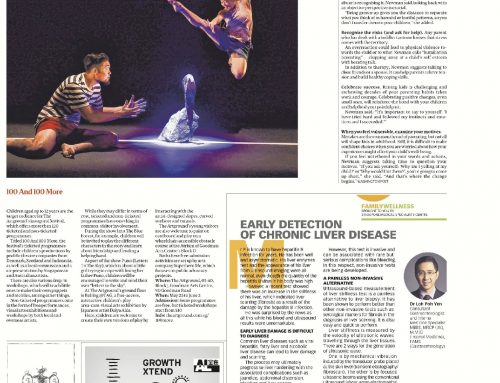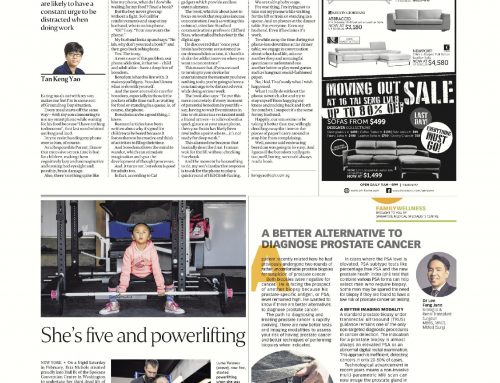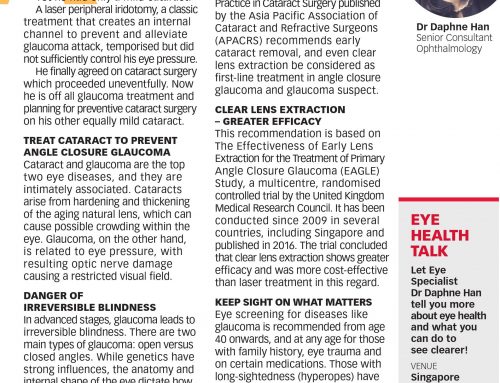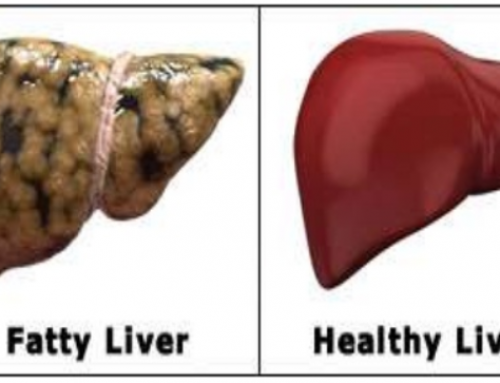Publication: The Business Times 16/04/2011
Don’t know what to expect at a health screening? Here’s a quick guide to the tests your doctor may use to determine your health status. By Chong Yeh Woei
PATIENTS usually come into my practice for a health screening appointment for the first time and are quite clueless or anxious about what they are in for. I will try to make them comfortable and get to why they are in my consultation room.
They come for a myriad of reasons. From having a loved one, friend or colleague who has been struck down by a major illness to concerns about new symptoms that they have experienced. These can range from chest pains to abdominal symptoms; from fatigue to loss of weight and appetite; from low back pain to persistent headaches.
It is important for the doctor to evaluate the symptoms to see if he can narrow down the diagnostic process to home in on the problem at hand. On the other hand, the health screening process is useful to discover the onset of chronic diseases and their sequelae.
Cholesterol profile
The cholesterol profile is useful to ascertain if the patient carries an increased cardiac risk. The total cholesterol level is more familiar to most patients as a guide to their cholesterol profile but the LDL or bad cholesterol is a more accurate measurement as most clinical trials are based on this parameter.
In most low-risk patients we would like to see LDL cholesterols of 130 mg/dL and below. If a patient was rated at a higher risk, with the risk factors of being male, a smoker, and having other chronic diseases or a family history of heart disease, we would like to see a lower LDL cholesterol of 100 mg/dL and below.
The fasting sugar level is also useful to see if the patient is diabetic or has a propensity to develop diabetes. If the sugar level is 110 mg/dL and above, the patient may need to be evaluated for diabetes. If the fasting sugar level is 200 mg/dL and above, the probability of diabetes is high. What this means is that the patient needs to be evaluated for diabetes with a glucose tolerance test. This is a stress test for sugar where the patient drinks a glass of glucose followed by blood tests to see how the body handles the sugar load.
Diabetes now affects 10 per cent of the population. One other test that is done is the hemoglobin Aic and that gives us the average of the sugar levels in the last three months. This is usually useful in monitoring diabetic treatment, but lately, some authorities have been looking at it as a way to diagnose diabetes. A level of 6.5 per cent and above would be indicative of diabetes.
Other chronic diseases that need to be diagnosed at health screenings would be high blood pressure. A reading of 135/85 mmHg and above would indicate the possibility of hypertension. We usually want to have three readings over three separate occasions to be sure that the patient has hypertension.
With these cardiac risk factors we will also look at the levels of highly sensitive C reactive protein. This is an inflammation protein and a raised level of 4 mg/L and above may indicate inflammation of the arteries and an increased risk of heart attack and stroke.
Another useful test to look at would be a treadmill stress test. A resting ECG picks up about 10 per cent of heart disease. The treadmill stress test could increase this pick-up to a magnitude of six to sevenfold. Please bear in mind that while the ECG is a static resting test, the treadmill is a dynamic test.
To put it simply, the treadmill stress test is like testing a car by driving it round the track. In some situations, the treadmill stress test is abnormal or positive and that would require us to investigate the patient further.
This could take the shape of a stress echocardiogram or a CT coronary angio-gram. A stress echo is a stress test with the difference being that an echo of the heart is done immediately after the patient finishes his treadmill stress test.
The CT coronary angiogram is where there is the injection of a dye or contrast agent into the bloodstream. The agent lights up the coronary arteries during the CT scan of the heart. The last two tests have a much higher pick-up rate compared to a treadmill.
The stress echo has no radiation but has a higher pick-up rate than the treadmill stress test, and this could well be eight to ninefold that of the ECG. The CT scan has a pick-up rate of close to 100 per cent but involves an injection of a contrast agent and radiation. It also costs more.
It does seem like when one approaches a good pick-up rate, one starts to experience the law of diminishing returns. The stress echo is still a dynamic test akin to driving the car round the track, whereas the CT scan is like opening up the car cylinders to have a look when the car is static and switched off. The CT scan is more of a structural study as opposed to a dynamic study. Both have their merits, but with the worries created by Fukushima, some patients may wish to avoid the medical radiation involved in a CT scan.
Chest X-ray and cancer markers
Sometimes my patients ask me why I still order a chest X-ray for health screenings. In truth I am not looking for lung cancer per se but am worried about the presence of tuberculosis, which is still endemic in Singapore with 1,500 new cases annually. Quite a number of business travellers may find themselves exposed to the disease in third world countries.
I would also like to address the issue of screening for cancers. There are a number of cancer markers that are done for men and women. These markers are by no means exhaustive or accurate. The pick-up rates may range from 30 to 70 per cent for a particular cancer. I find them a useful guide, but sometimes they can generate a relentless search for a cancer in the patient. This could result in a situation where we have to throw the proverbial “kitchen sink” of investigations at the patient and subject them to endless rounds of testing.
Finally, are there parameters we can look at that indicate the general health of the patient? Indeed, the albumin level in the liver function and the haemoglobin levels in the blood counts are often good overall predictive indicators of good health in a patient.
A good albumin level of 4 grams/dL and above would indicate the absence of chronic liver diseases and good general health in a patient free of major illnesses. The haemoglobin level of 14 grams and above in men would often sing the very same tune. In the final analysis, health screenings should also be educative processes where we are teaching the patient how to be a more sophisticated medical consumer.





